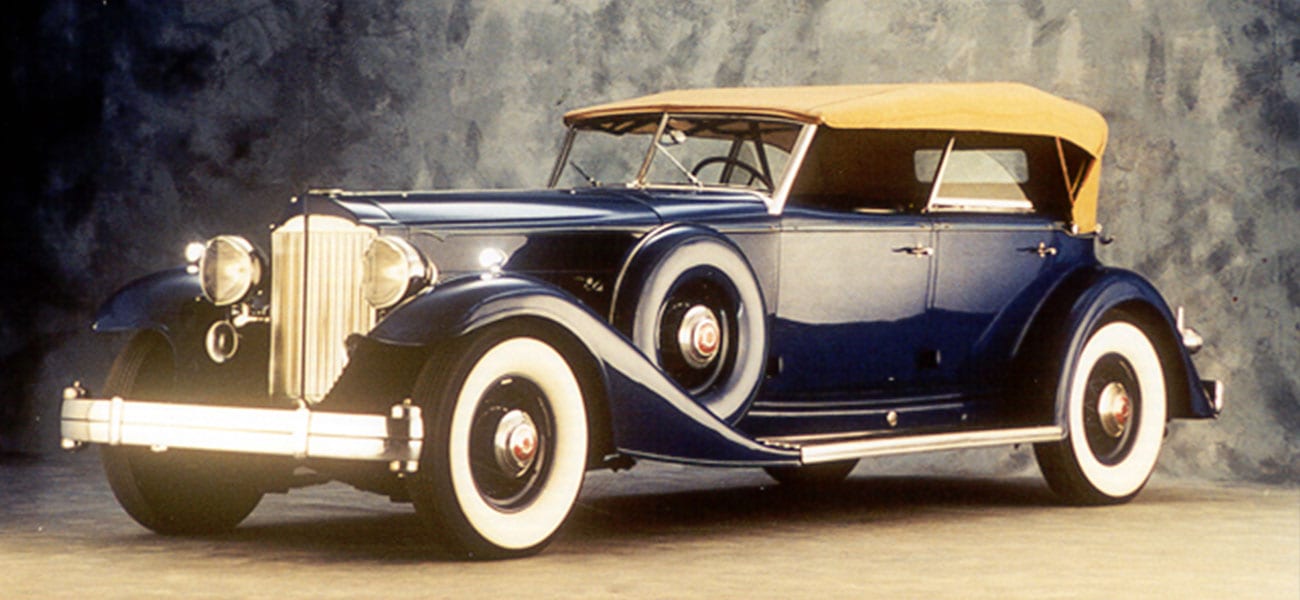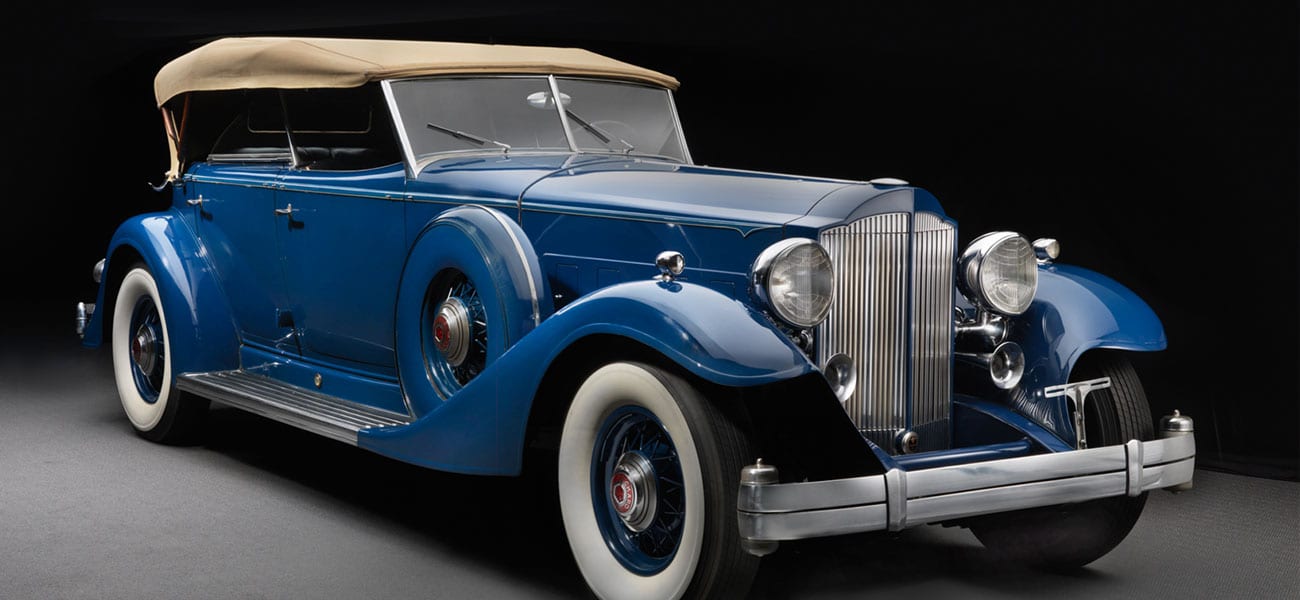Tech Specs
Twelve-cylinder, 67 degree vee engine, 445.47 cubic inches, 160 hp at 3200 rpm.
Before/After
1933 Packard


About the 1933 Packard Twelve Dual Cowl Sport Phaeton
For over half a century, the company suggested, “ask the man who owns one,” fully confident of what the answer would be. Packard owner loyalty was fierce. It still is. Enthusiasts of the marque today virtually leap at the chance to espouse the virtues of a Packard.
The virtues were estimable. For extended touring on the open road, few cars could equal the comfort and ease of travel by Packard. Occasionally even Ettore Bugatti used one in preference to his own make for journeys on the Continent. In America, Packard was favored by college presidents and for ceremonial parades (Lindbergh’s ticker tape in 1927, Roosevelt’s inaugural in 1933 among them). Packard spelled prestige.
This V-12 Sport Phaeton typifies the classic Packards of the early thirties. Its price tag was $5875, its fuel consumption under 10 mpg, its top speed over 100 mph. The car’s coachwork was courtesy of Ray Dietrich, Packard’s most prolific custom body designer. Sophistication of line and proportion was a Dietrich hallmark, as were nifty styling treatments of usually mundane features. The rear compartment wind wings in this car, for example, hinge at the rear windshield, attach at the door handles, and thus open and close with the doors themselves. If a breezier ride was desired, the wings could simply be unhooked and folded against the windshield; the entire assembly then rolled down neatly into the divider section.
Precisely how many Sport Phaetons were built is not known. This particular car was displayed in Philadelphia in the spring of 1933 to generate interest in the new Packard models, but in that Great Depression year, sales were few. From an almost 50,000-car annual production in the twenties, Packard had plunged to less than 10,000 cars by 1933. The top-of-the-line Packard (V-12 engine, 147-inch chassis) was available in 17 different body styles. Just 276 found buyers that year. The last Packard of all was built in 1958.
Photos – Peter Harholdt













